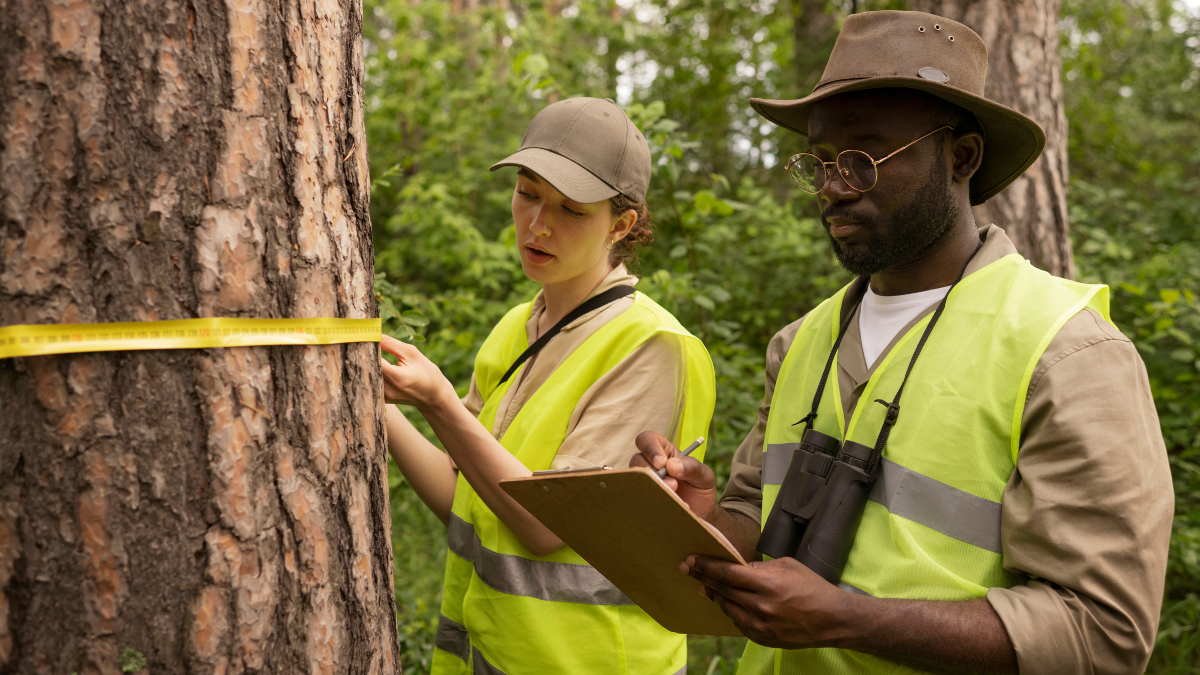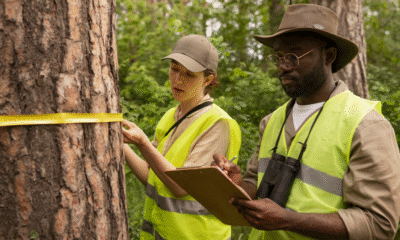NEWS
Tecnoregio News: Your Ultimate Guide to Innovation, Industry Updates, and Regional Technology Insights

In today’s fast-paced digital age, staying informed about the latest advancements in technology and regional industrial development is crucial for businesses, professionals, and tech enthusiasts alike. One digital platform that has emerged as a vital hub of such information is Tecnoregio News. But what exactly is Tecnoregio News? Why has it become a go-to source for updates on regional technology and innovation? This guide answers these questions and more, offering an in-depth overview of what Tecnoregio News is, what it offers, and why it matters.
What is Tecnoregio News?
Tecnoregio News is an online news and content platform that provides curated and original reporting on technology, innovation, industrial growth, startups, and regional tech developments, especially across Latin American and European regions. The term “Tecnoregio” combines “tecno” (technology) and “regio” (region), highlighting its focus on regional tech developments and localized innovation stories.Unlike global tech giants such as TechCrunch or Wired that focus primarily on Silicon Valley and international tech news, Tecnoregio News concentrates on local ecosystems, regional initiatives, and industrial advancements, especially those often overlooked by mainstream media.
Core Focus Areas of Tecnoregio News
To understand the unique value of Tecnoregio News, it’s essential to break down the main categories and sectors it covers:
1. Regional Technology Innovations
Tecnoregio News highlights emerging technologies from cities, provinces, and industrial corridors that are not traditionally seen as tech hubs. Whether it’s a university in Cordoba developing AI tools or an agritech startup in Baja California, these regional stories get prime visibility.
2. Startups and Entrepreneurship
A major strength of Tecnoregio News is its dedication to covering local startups, incubators, accelerators, and innovation labs. Interviews with founders, feature stories on bootstrapped ventures, and data-driven insights into emerging sectors make this a favorite among startup ecosystems.
3. Industrial Development
Many regions are witnessing a silent revolution in Industry 4.0—automation, smart factories, IoT-based infrastructure, and digital twins. Tecnoregio News follows these trends and how traditional industries are transitioning into the digital age.
4. Policy and Regulation
Regional policies can significantly influence technological growth. Tecnoregio News provides detailed analysis of local government regulations, grants, funding schemes, and development programs that directly impact innovation at the ground level.
5. Education and R&D
Universities, research centers, and public-private partnerships are key drivers of innovation. Tecnoregio News reports on collaborations, STEM initiatives, and breakthroughs from academic institutions that are shaping the future of tech.
Tecnoregio News in the Digital Ecosystem
Unlike standard news portals, Tecnoregio News integrates content marketing, research journalism, and regional collaboration into its strategy. Here’s how it positions itself in the current digital ecosystem:
Multilingual Content: Primarily available in Spanish, but expanding into English and Portuguese to reach broader audiences across Latin America and Europe.
Community Driven: The platform often hosts contributions from guest writers, professors, entrepreneurs, and local policymakers.
Data-Backed Reports: Whitepapers and regional reports analyzing trends in specific sectors such as agri-tech, med-tech, and green energy are a popular offering.
Event Coverage: Tecnoregio News covers local tech fairs, hackathons, and industry expos, providing real-time insights into what’s happening on the ground.
Why Tecnoregio News is Important
1. Bridging Information Gaps
Smaller cities and rural innovation hubs often lack media coverage. Tecnoregio News provides visibility to regional players, helping them attract funding, partnerships, and talent.
2. Supporting Local Economies
By covering startups and industries in non-metropolitan areas, the platform promotes economic decentralization—encouraging investment and talent dispersion beyond major cities.
3. Educational Value
Tecnoregio News serves as an educational tool for students, researchers, and policy analysts. It offers insightful case studies, pilot project evaluations, and regional tech benchmarking.
4. Fostering Collaboration
The platform fosters regional innovation networks by enabling dialogue between academia, industry, and government—a true Triple Helix model in action.
Popular Segments and Columns on Tecnoregio News
Let’s take a look at some popular recurring segments that readers eagerly anticipate:
1. Startup Spotlight
A weekly feature that deep dives into a local startup—its founders, mission, business model, and funding journey.
2. Tech Transfer Tuesdays
Covers university research that’s moving from lab to market. These stories focus on patents, tech licensing, and real-world impact.
3. Women in Regional Tech
This segment highlights women entrepreneurs, scientists, and engineers who are breaking barriers and leading innovative projects in underserved regions.
4. The Regional Edge
An analytical column discussing how a particular region is competing globally in sectors like clean energy, automation, and digital health.
Real-World Examples Covered by Tecnoregio News.
Example 1: Renewable Energy in Oaxaca, Mexico
A feature explored community-led solar microgrids providing electricity to off-grid towns, using blockchain for energy credits.
Example 2: AI-Powered Learning in Medellín, Colombia
The city launched an AI curriculum in public schools, and Tecnoregio News was the first to report on the curriculum’s success in improving STEM engagement.
Tecnoregio News and Its Audience
The platform appeals to a diverse audience, including:
Entrepreneurs and Founders
Policy Makers and Government Officials
STEM Students and Educators
Investors and VCs looking for emerging markets
Industry Analysts and Consultants
Its reach is growing due to its authenticity, relevance, and in-depth storytelling—especially as tech decentralization gains global traction.
Challenges Faced by Tecnoregio News
Despite its success, the platform faces certain challenges:
Scaling Multilingual Content: Translating region-specific stories without losing nuance is tough.
Funding and Sustainability: Like many niche platforms, it must balance revenue generation with editorial independence.
Tech Adoption in Rural Areas: Slow internet or lack of digital infrastructure can hinder engagement from remote regions.
The Future of Tecnoregio News
Looking ahead, Tecnoregio News is aiming to:
Expand into more regions like Southeast Asia and Sub-Saharan Africa with similar localized tech reporting needs.
Launch mobile apps with offline reading capabilities for rural accessibility.
Build a community platform for crowdsourced reporting and innovation contests.
Its mission remains clear: to democratize access to technological knowledge and give voice to underrepresented innovators.
FAQs About Tecnoregio News
Yes, most content on Tecnoregio News is freely accessible, although premium features and regional reports may require a subscription.
Q2: Can I submit content to Tecnoregio News?
Absolutely. Tecnoregio News encourages regional professionals, entrepreneurs, and students to submit stories, opinion pieces, and case studies.
Q3: Does Tecnoregio News cover global tech news?
It primarily focuses on regional tech but sometimes includes comparative pieces and global insights that affect regional ecosystems.
Q4: How can I stay updated with Tecnoregio News?
You can subscribe to their newsletter, follow them on LinkedIn and Twitter, or use their RSS feed.
Q5: Is Tecnoregio News affiliated with any government or university?
While it often collaborates with educational and public institutions, it operates independently as a journalistic entity.
Conclusion
In a world increasingly shaped by technology, regional innovation ecosystems need a platform to tell their stories, showcase their achievements, and connect with the global digital economy. Tecnoregio News does precisely that—it’s not just a news outlet, but a movement to decentralize tech visibility and promote equitable access to innovation.
Whether you’re a tech entrepreneur from a small town, a policymaker crafting innovation strategies, or a student passionate about local impact—Tecnoregio News is your gateway to the pulse of regional technology.
NEWS
Inside the Newsroom: How Bestadvise4u.com News Is Shaping Modern Digital Journalism

In a digital world overflowing with headlines, viral trends, and a relentless stream of breaking stories, the search for reliable, relevant, and reader-focused news platforms is more critical than ever. Emerging from the digital noise is Bestadvise4u.com News — a rising player in the realm of independent online news delivery.
While traditional news organizations continue to dominate the global media landscape, smaller yet dynamic platforms like Bestadvise4u.com are steadily changing how the average reader consumes information. With a focus on timely reporting, trending topics, and diverse coverage, Bestadvise4u.com News has carved a space for itself in the ever-growing ecosystem of digital journalism.
What Is Bestadvise4u.com News?
A Modern Digital News Platform
Bestadvise4u.com News is the dedicated news division of the larger Bestadvise4u.com platform. While the main site may cover a broad range of topics, including advice columns, how-to guides, and digital resources, the news section stands apart as a centralized hub for real-time information and article-based journalism.
Unlike content mills or clickbait-heavy news blogs, Bestadvise4u.com News focuses on curated, topic-based updates that aim to educate, inform, and guide its audience. The topics span global headlines, economic shifts, technology trends, health updates, and niche cultural developments.
The Structure of News at Bestadvise4u.com
News Categories at a Glance
Bestadvise4u.com News organizes its content into carefully curated sections to ensure readers can easily navigate topics of interest. Some of the most prominent categories include:
World & National News
Coverage of international diplomacy, elections, conflicts, and geopolitical changes.
Technology & Innovation
Updates on tech startups, cybersecurity news, AI advancements, blockchain, and gadgets.
Finance & Markets
Market movements, investment strategies, cryptocurrency trends, and personal finance.
Health & Wellness News
Public health alerts, medical discoveries, fitness trends, mental health awareness.
Lifestyle & Culture
Celebrity updates, viral stories, pop culture moments, and entertainment highlights.
Environment & Science
Climate change, sustainability, new scientific studies, and space discoveries.
Each category features a mix of breaking news, deep dives, and trending insights, making it ideal for both fast updates and detailed reading.
How Bestadvise4u.com News Maintains Credibility
Balanced Reporting with Digital Agility
One of the most important aspects of any news outlet is trust. In an era where misinformation spreads faster than facts, Bestadvise4u.com News aims to maintain transparency by adhering to the following editorial principles:
Source Verification: News stories are linked to original sources or government/academic institutions where applicable.
Fact-First Writing: Articles aim to present verified information before opinion or interpretation.
Neutral Tone: Most stories are written in a factual, non-sensational voice, allowing the reader to form their own conclusions.
Corrections and Updates: When information changes, updates are published on the same story page or through follow-up coverage.
While it may not operate under the umbrella of legacy journalism, Bestadvise4u.com News is committed to informational integrity, especially in health, finance, and political reporting.
The User Experience: Reading and Navigating the News
Designed for the Digital Reader
The design of Bestadvise4u.com News reflects the habits of modern online readers. Here’s what sets the experience apart:
Mobile-Friendly Layout: Pages load quickly and adapt smoothly to mobile devices, making it ideal for on-the-go reading.
Minimal Distraction: Fewer ads and cleaner sidebars make it easier to focus on article content.
Scannable Formats: Bullet points, subheadings, and summaries are used frequently, catering to fast-reading audiences.
SEO and Tagging: Articles are well-optimized for search engines, helping readers discover stories through organic search.
For digital readers accustomed to flashy pop-ups, autoplay videos, or aggressive ads, Bestadvise4u.com offers a refreshing balance of content richness and usability.
Trending Topics and Timeliness
Always Updated, Always Relevant
A key strength of Bestadvise4u.com News is its ability to respond rapidly to emerging stories and viral trends. For example:
In tech, you might find real-time updates about the latest Apple release or AI breakthrough.
In finance, expect crypto crashes or stock booms to be reported within hours of major movements.
Health alerts—such as pandemic updates, FDA approvals, or mental health studies—are published with both urgency and clarity.
This focus on timely reporting is vital in today’s digital climate, where news becomes outdated within a day or even hours.
Comparing Bestadvise4u.com News to Other News Sources
Strengths and Unique Positioning
Let’s compare how Bestadvise4u.com News stacks up against other digital and traditional outlets.
Criteria Bestadvise4u.com News Mainstream Media News Aggregators
Speed Fast Moderate Very Fast
Cost to Read Free Often paywalled Free
Tone Neutral/Informal Formal Mixed
Originality Medium High Low
Search Optimization Excellent Varies High
Trust Score Growing Established Varies
Bestadvise4u.com News is especially useful for quick insights, introductory overviews, and new perspectives that traditional platforms might overlook due to editorial red tape or legacy protocols.
The Audience: Who Is Reading Bestadvise4u.com News?
Reaching a Diverse, Digital-First Audience
The typical Bestadvise4u.com News reader falls into one or more of these categories:
Millennials and Gen Z readers looking for digestible content
Freelancers and entrepreneurs monitoring financial or business trends
Students and researchers seeking simplified explanations of complex topics
Curious consumers interested in tech, health, and current events
The site’s open access policy and variety of topics make it ideal for global, multicultural audiences.
Future of Bestadvise4u.com News
What’s Ahead for This Digital-First News Outlet?
As Bestadvise4u.com News continues to evolve, several growth directions are apparent:
a. Multimedia Integration
Potential addition of short-form video news
Infographics and visual explainers for scientific or financial stories
b. Email Newsletters and Subscriptions
Offering curated daily or weekly news digests
Building user loyalty through regular touchpoints
c. AI-Assisted Reporting
Using tools like GPT, Jasper, or Surfer SEO to generate fast updates
Maintaining human editorial oversight to ensure journalistic integrity
d. News App Development
A potential future mobile app could increase user engagement and notification-based traffic
Conclusion: A Rising Star in Independent Online Journalism
In a world where the definition of “news” is being reshaped daily by technology, trends, and public perception, Bestadvise4u.com News offers a grounded, reader-first approach to digital journalism. With a fast-expanding library of news stories, a focus on modern formatting, and a commitment to truth, it stands as an excellent example of how new-generation news platforms can coexist with legacy media while appealing to digital-native audiences.
If you’re looking for fresh perspectives, fast coverage, and informative storytelling, Bestadvise4u.com News might just be the next tab you open in your daily news routine.
NEWS
Forestry Development Authority: Guardians of Our Forests

Forests are among the most vital natural resources on the planet. They regulate climate, protect biodiversity, and support the livelihoods of billions of people worldwide. In regions with rich forest ecosystems, the sustainable management of these resources becomes not only an environmental imperative but also a developmental necessity. This is where institutions like the Forestry Development Authority (FDA) come into play. The Forestry Development Authority is a governmental or semi-governmental agency, depending on the country, that oversees the sustainable development, conservation, and management of forest resources.
we explore the origins, functions, challenges, and impact of a Forestry Development Authority, with a primary focus on its relevance in developing nations where forest resources are both economically significant and ecologically sensitive.
What Is the Forestry Development Authority?
The Forestry Development Authority is typically an official body set up by governments to manage and protect forest resources. While the name and structure might vary across countries, the core responsibilities remain consistent. These include enforcing forestry laws, issuing logging licenses, promoting sustainable forestry practices, conserving biodiversity, and involving communities in forest management.
A notable example is Liberia’s Forestry Development Authority, which was established in 1976 to manage the nation’s extensive forest reserves. The organization has been central to Liberia’s efforts to combat illegal logging, improve transparency in the forestry sector, and promote community forest initiatives.
Key Functions of a Forestry Development Authority
1. Forest Conservation and Protection
One of the primary responsibilities of any Forestry Development Authority is to safeguard existing forests. This includes identifying protected areas, enforcing bans on illegal logging, and monitoring forest cover using technologies like satellite imagery and Geographic Information Systems (GIS). They often work in partnership with international organizations such as the UN’s REDD+ program (Reducing Emissions from Deforestation and Forest Degradation).
2. Sustainable Forestry Management
Balancing the use and conservation of forests is a delicate task. A Forestry Development Authority creates guidelines and policies to promote sustainable forestry. This might include implementing controlled logging quotas, mandating reforestation programs, and encouraging the use of alternative materials to reduce wood dependency.
3. Issuing Licenses and Permits
Logging companies and timber exporters are required to obtain permits through the Forestry Development Authority. These permits are issued based on environmental impact assessments, sustainable yield calculations, and compliance with national and international regulations.
4. Research and Development
A Forestry Development Authority often operates research departments to study forest ecosystems, track endangered species, and understand the impact of human activities on forest health. This research helps in policy formation and the adoption of adaptive management practices.
5. Community Involvement and Education
Modern forest governance recognizes the role of indigenous peoples and local communities. FDAs are increasingly working to empower these groups through community forestry programs, educational campaigns, and by facilitating their involvement in decision-making processes.
Importance of a Forestry Development Authority in Sustainable Development
In countries with significant forest cover, the Forestry Development Authority plays a crucial role in national development. Forests contribute to GDP through timber, non-timber forest products (NTFPs), tourism, and carbon credits. More importantly, forests provide ecosystem services such as water purification, air quality regulation, and soil conservation.
An effective FDA ensures that these services are preserved while enabling economic benefits. For example, by regulating logging and replanting initiatives, the authority can create jobs, attract foreign investment, and prevent the long-term ecological degradation that undermines economic growth.
Challenges Faced by Forestry Development Authorities
Despite their critical role, FDAs face a number of challenges, especially in low-income and post-conflict countries.
1. Insufficient Funding
Most FDAs operate on limited budgets, which constrains their ability to carry out inspections, deploy technology, or conduct public outreach. Donor dependency can also lead to short-term project cycles that are not sustainable in the long run.
2. Community Conflicts
Where communities rely on forests for their daily needs, restrictive policies can lead to tensions. Striking a balance between conservation and livelihood protection is a continuous challenge.
3. Climate Change
Climate change exacerbates forest degradation through increased drought, wildfires, and pest outbreaks. FDAs must constantly adapt to these new threats while working within constrained resources.
Success Stories and Innovations
Despite these challenges, there are notable success stories where FDAs have led the way in innovative forest management.
Liberia has implemented a chain-of-custody system for timber exports to ensure legality and traceability.
Nepal’s community forestry model, supported by its forestry authority, has become a global example of how empowering locals can lead to better conservation outcomes.
Brazil’s Forest Code and monitoring systems like DETER (used by the Brazilian Forestry Service) showcase the power of real-time satellite monitoring in curbing illegal deforestation.
Moreover, digital tools like blockchain are being explored by some forestry authorities to bring transparency to timber trade, while drone technology is being used for forest mapping and monitoring.
The Future of Forestry Development Authorities
The global urgency surrounding climate change and biodiversity loss places forestry authorities at the center of environmental strategy. Going forward, FDAs must evolve into technologically advanced, community-oriented institutions. Strengthening governance, securing long-term funding, and fostering regional and international cooperation will be key to their effectiveness.
Furthermore, as carbon markets grow and international funding for climate-related projects increases, FDAs can act as the implementing bodies for programs that provide carbon credits through forest conservation.
Conclusion
The Forestry Development Authority is more than just a regulatory body—it is a vital guardian of natural heritage and a driver of sustainable development. In an age of environmental crisis and ecological awakening, strengthening such institutions is not just beneficial—it is essential. Whether through enforcing laws, educating the public, or collaborating with local communities, FDAs play a pivotal role in shaping a sustainable future for forests and the people who depend on them.
-

 HEALTH3 months ago
HEALTH3 months agoMega-Personal.net Health Archives: The Ultimate Guide to Health Information and Resources
-

 NEWS4 weeks ago
NEWS4 weeks agoForestry Development Authority: Guardians of Our Forests
-

 FASHION4 months ago
FASHION4 months agoWhy Fashion Is Important to People: A Deep Dive Into Its Cultural, Psychological, and Social Impact
-

 BLOG4 months ago
BLOG4 months agoExploring the Revolutionary Potential of New Software 418DSG7
-

 CRYPTO4 weeks ago
CRYPTO4 weeks agoCrypto30x.com: A Comprehensive Investigation Into the 30X Returns Crypto Platform
-

 CRYPTO3 months ago
CRYPTO3 months agoLessInvest.com Crypto: A Comprehensive Guide to Smart Cryptocurrency Investing
-

 CRYPTO4 months ago
CRYPTO4 months agoWhich Crypto Has 1000x Potential? A 2025 Investor’s Deep Dive into the Next Crypto Explosion
-

 NEWS4 weeks ago
NEWS4 weeks agoInside the Newsroom: How Bestadvise4u.com News Is Shaping Modern Digital Journalism
